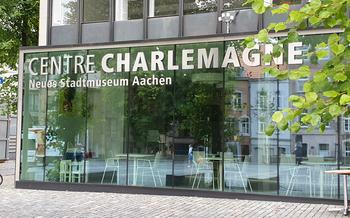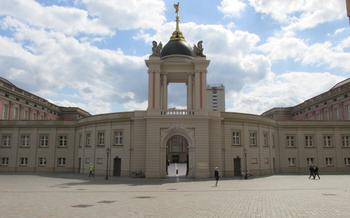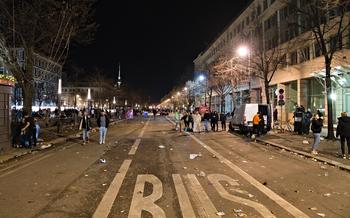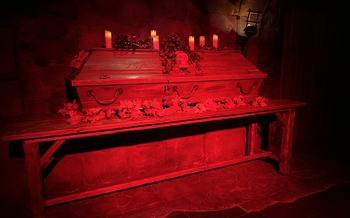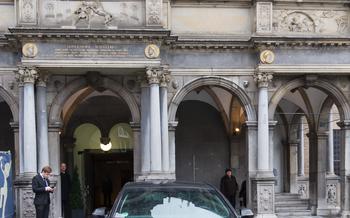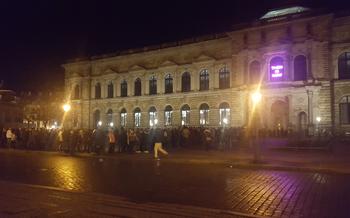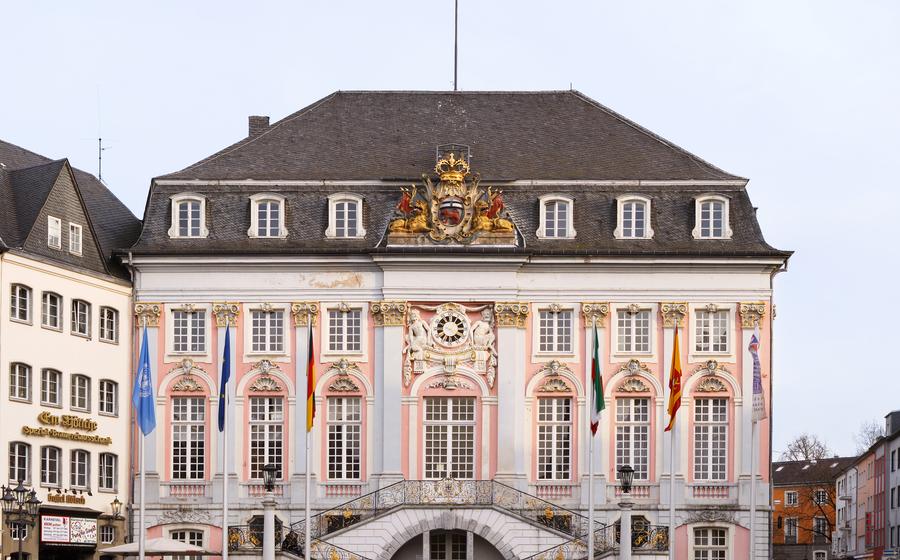
Siegfried Line Trail
- The Siegfried Line Trail: A Historic Journey
- Exploring the Remains of the Siegfried Line
- Immerse Yourself in Nature's Beauty
- Discover the Historical Sites
- Experience the Local Culture
- Visit the Museums and Memorials
- Plan Your Accommodation
- Choose the Best Hiking Route
- Essential Hiking Gear
- Explore the Nearby Towns
- Safety Precautions
- Plan Your Transportation
- Capture the Memories
- Budgeting for Your Trip
- Insider Tip: Explore the Secret Bunkers
The Siegfried Line Trail: A Historic Journey
The Siegfried Line, also known as the Westwall, stands as a testament to the tumultuous events of World War II. Constructed by Nazi Germany in the 1930s, this formidable defensive system stretched over 630 kilometers along the western border, designed to deter any potential invasion. Today, the Siegfried Line Trail offers an immersive journey into this chapter of history, allowing visitors to explore the remnants of this once-mighty fortification.
The trail traverses a diverse landscape, passing through forests, fields, and charming villages. Along the way, you'll encounter bunkers, trenches, and other fortifications, providing a glimpse into the strategies and tactics employed during the war. The trail is well-marked and accessible to hikers of all levels, making it an ideal destination for history enthusiasts and outdoor adventurers alike.
To reach the Siegfried Line Trail, you can take a train to one of the nearby towns, such as Bad Münstereifel or Kall. From there, you can either hike directly to the trailhead or take a bus or taxi. The best time to visit the trail is during the spring or fall when the weather is pleasant for hiking.
Exploring the Remains of the Siegfried Line
The Siegfried Line Trail offers a unique opportunity to explore the remnants of this formidable defensive structure. Along the trail, you'll encounter a variety of fortifications, including bunkers, trenches, and tank traps, each providing a glimpse into the strategic thinking and engineering prowess of the time. Discover the intricate network of tunnels and chambers that served as living quarters, command posts, and storage facilities for the German troops.
Learn about the construction of the Siegfried Line, a massive undertaking that involved the mobilization of vast resources and manpower. Understand the purpose of this defensive system, which was designed to protect Germany from potential Allied invasions. Hear stories of the soldiers who manned the fortifications, their daily lives, and the challenges they faced.
Uncover the fascinating tales of visitors who have explored the trail, sharing their experiences and insights. Listen to their anecdotes about uncovering hidden bunkers, encountering wildlife, and gaining a deeper appreciation for the historical significance of the Siegfried Line.
Immerse Yourself in Nature's Beauty
The Siegfried Line Trail offers a captivating blend of history and nature. As you embark on your journey, be prepared to be mesmerized by the stunning landscapes that unfold before you. Lush forests, rolling hills, and sparkling rivers create a picturesque backdrop for your hike. The trail meanders through diverse ecosystems, providing a haven for a rich variety of flora and fauna. Spot wild orchids and delicate wildflowers adorning the meadows, while the air buzzes with the sound of birdsong. Keep an eye out for shy woodland creatures, such as deer, foxes, and squirrels, as they dart through the undergrowth. The Siegfried Line Trail is a paradise for nature enthusiasts, offering ample opportunities for wildlife spotting and capturing breathtaking photographs of the natural surroundings.
Discover the Historical Sites
The Siegfried Line Trail is not just a journey through history; it also offers the chance to explore the many historical sites that dot the landscape. From ancient Roman ruins to medieval castles and World War II bunkers, there's something for every history buff.
Xanten: - Visit the ruins of the ancient Roman city of Colonia Ulpia Traiana, founded in the 1st century AD. Explore the amphitheater, temple, and city walls, and immerse yourself in the history of this once-thriving metropolis.
Cleves: - Discover the Schwanenburg Castle, a magnificent Renaissance palace built in the 16th century. With its stunning gardens, opulent interior, and fascinating history, this castle is a must-see for anyone interested in German history and architecture.
Kalkar: - Explore the ruins of the Kalkar Nuclear Power Plant, a massive unfinished nuclear reactor that was abandoned in the 1990s. Learn about the history of nuclear power in Germany and the challenges of decommissioning these complex facilities.
Goch: - Visit the Museum Goch, which houses a collection of artifacts and exhibits related to the history of the region. From prehistoric tools to medieval pottery, the museum offers a glimpse into the rich cultural heritage of the Lower Rhine.
Weeze: - Pay your respects at the Weeze War Cemetery, where over 3,000 soldiers from the Commonwealth forces who fell during World War II are buried. The cemetery is a poignant reminder of the sacrifices made by so many during the conflict.
Experience the Local Culture
The region surrounding the Siegfried Line Trail is steeped in rich cultural traditions that offer a glimpse into the local way of life. Embrace the warmth and hospitality of the friendly locals, who are always eager to share stories and traditions. Immerse yourself in the vibrant festivals and events held throughout the year, showcasing traditional music, dance, and culinary delights. Don't miss the chance to savor the region's delectable cuisine, from hearty meat dishes to freshly baked pastries, accompanied by a refreshing glass of local beer or wine. Engage in conversations with the locals, learn about their customs, and embrace the opportunity to experience the authentic charm of this region.
Visit the Museums and Memorials
The Siegfried Line Trail is dotted with museums and memorials that provide a deeper understanding of the historical significance of the region. Among the most notable is the Siegfried Line Museum, located in Bad Münstereifel. Here, visitors can explore exhibits on the construction and purpose of the Siegfried Line, as well as artifacts from the soldiers who manned the fortifications.
Another must-visit is the Hürtgen Forest Museum, which delves into the fierce battles that took place in the Hürtgen Forest during World War II. Through interactive displays and personal accounts, the museum brings to life the horrors and sacrifices of the war.
For those interested in paying their respects to the fallen, the Hürtgen Forest War Cemetery offers a poignant tribute. This serene resting place is home to the graves of over 3,000 soldiers who lost their lives in the Hürtgen Forest battles.
Guided tours are available at many of these museums and memorials, providing an in-depth understanding of the historical events that shaped this region. These tours are highly recommended for those who want to gain a deeper appreciation for the sacrifices made during World War II.
Plan Your Accommodation
When planning your Siegfried Line Trail adventure, finding suitable accommodation is crucial. The region offers a range of options to suit different budgets and preferences. For budget-conscious travelers, guesthouses and hostels provide affordable stays with basic amenities. Hotels offer more comfort and convenience, with options ranging from family-run establishments to modern chain hotels.
If you seek a unique experience, consider staying in a historic building or castle. These accommodations offer a glimpse into the region's rich past and provide an unforgettable ambiance. However, it's essential to book early, especially during peak season, to secure your preferred accommodation.
Here are some tips for finding the best accommodation near the Siegfried Line Trail:
- Utilize online booking platforms to compare prices and read reviews from fellow travelers.
- Contact local tourism offices for recommendations and information on special offers.
- Consider staying in nearby towns or villages to find more affordable options.
- If hiking during the summer, make reservations in advance to avoid disappointment.
Choose the Best Hiking Route
The Siegfried Line Trail offers a variety of hiking routes, catering to different fitness levels and interests. The main trail, known as the "Hauptwanderweg," spans approximately 125 kilometers and takes about 6-7 days to complete. It follows the entire length of the Siegfried Line, passing through various historical sites and scenic landscapes.
For those seeking a shorter and less challenging hike, there are several shorter circular routes ranging from 5 to 15 kilometers. These routes focus on specific sections of the Siegfried Line, allowing hikers to explore specific fortifications or areas of natural beauty.
When choosing a route, consider your fitness level, the time you have available, and your interests. If you're short on time or prefer a more leisurely pace, opt for one of the shorter circular routes. For a more comprehensive and challenging experience, tackle the Hauptwanderweg, which offers a true immersion into the history and nature of the Siegfried Line.
Before embarking on your hike, obtain a detailed map of the trail and choose a route that aligns with your interests and abilities. Whether you prefer exploring the entire length of the Siegfried Line or focusing on specific sections, the trail offers a diverse range of options for an unforgettable hiking experience.
Essential Hiking Gear
When embarking on the Siegfried Line Trail, it's crucial to be well-prepared with the appropriate hiking gear. Sturdy footwear is paramount, as the trail involves uneven terrain and rocky paths. Choose hiking boots or shoes with good ankle support and a comfortable fit. Dress in layers, as the weather can be unpredictable, and temperatures can fluctuate throughout the day. A waterproof jacket is essential for sudden rain showers, and a warm hat and gloves are handy for cooler mornings and evenings.
Carry a backpack to store your supplies, including water, snacks, and a first-aid kit. Stay hydrated by bringing at least two liters of water, especially during the summer months. Pack energy-rich snacks like nuts, granola bars, or fruit to keep your energy levels up during the hike. A basic first-aid kit is vital for treating minor injuries or blisters.
Pack light to avoid unnecessary weight, and choose gear appropriate for the weather conditions. If hiking in the summer, opt for lightweight, breathable clothing. In colder months, consider thermal layers and a waterproof outer shell. Remember a flashlight or headlamp for exploring bunkers or hiking in low-light conditions.
To avoid hiking mishaps, ensure your gear is in good condition before setting off. Check your backpack straps, tent poles, and other equipment for any signs of wear or damage. Always carry a map and compass, even if you have a GPS device, as technology can fail. Let someone know your hiking plans and expected return time for safety purposes.
Explore the Nearby Towns
Dotted around the Siegfried Line Trail are several charming towns and villages, each with its unique history and allure. Take a break from hiking to explore these hidden gems.
- Monschau: A picturesque town known for its well-preserved medieval architecture and narrow cobbled streets.
- Bad Münstereifel: A spa town nestled in the Eifel hills, famous for its thermal springs and historic buildings.
- Cochem: A charming town located on the Moselle River, offering stunning views of the surrounding vineyards and forests.
- Trier: Germany's oldest city, boasting Roman ruins, a UNESCO World Heritage Site cathedral, and a vibrant cultural scene.
Discover local markets selling fresh produce and handmade crafts. Indulge in traditional German cuisine at cozy cafes and restaurants. Explore local museums to delve deeper into the region's rich history.
Don't miss the chance to venture off the beaten path and uncover the hidden gems of the Eifel region.
Safety Precautions
The Siegfried Line Trail is generally safe for hikers, but it is essential to be aware of potential hazards and take necessary precautions. The trail passes through forests, fields, and steep terrain, so sturdy footwear and appropriate clothing are crucial. Be mindful of uneven surfaces, slippery rocks, and tree roots to avoid tripping or falling.
Respect the local wildlife and maintain a safe distance from animals, especially during mating or nesting seasons. Observe wildlife from a distance and avoid feeding or approaching them. If you encounter aggressive animals, remain calm and slowly back away.
Be aware of the weather conditions and prepare accordingly. The weather in the region can change rapidly, so pack layers of clothing and a waterproof jacket. Carry a map and compass or a GPS device to navigate the trail, especially if you are hiking in unfamiliar territory.
Inform someone about your hiking plans and expected return time. Keep your mobile phone charged and easily accessible in case of emergencies. Emergency contacts and local rescue services are available if needed.
By following these safety precautions, you can ensure a safe and enjoyable hiking experience on the Siegfried Line Trail.
Plan Your Transportation
To reach the Siegfried Line Trail, you have several transportation options. Trains and buses provide convenient connections to the trail's starting points from major cities in Germany. If you prefer a more flexible experience, consider renting a car, allowing you to explore the region at your own pace and venture into nearby towns and villages.
When traveling by public transportation, plan your routes carefully, as some areas may have limited bus or train services. Check schedules in advance and consider purchasing a regional pass for discounted fares.
Renting a car offers the freedom to explore the trail and its surroundings on your own terms. Keep in mind that parking fees may apply at some trailheads, so be prepared with coins or a credit card.
To make the most of your time, plan your transportation routes strategically. Consider starting your hike from a different trailhead each day to avoid backtracking. Research the best routes to avoid traffic congestion, especially during peak tourist season.
And there you have it, all the practical information you need to embark on an unforgettable journey along the Siegfried Line Trail. Whether you choose to hike, bike, or simply explore the historical sites, this trail promises a rich and rewarding experience.
Capture the Memories
Embark on a photographic journey as you traverse the Siegfried Line Trail. Capture the essence of this historic trail through stunning landscape shots that showcase the interplay of nature and history. Zoom in to reveal the intricate details of the fortifications, bunkers, and trenches, allowing viewers to appreciate the magnitude of this defensive system. Don't miss the opportunity to photograph wildlife encounters, as the trail is home to a diverse array of creatures.
Utilize filters and editing software to enhance the visual impact of your photographs, transforming them into works of art. Share your captivating images on social media, inspiring others to embark on their own Siegfried Line adventure. Through your lens, allow the world to witness the beauty, history, and significance of this remarkable trail.
Budgeting for Your Trip
Exploring the Siegfried Line Trail can be a budget-friendly adventure. Accommodation options range from affordable guesthouses to charming hotels, with prices varying depending on the season and location. Food costs can be kept low by packing your own snacks and meals, or by trying local specialties at budget-friendly restaurants. Transportation costs can be minimized by using public transportation or renting a car and exploring the region at your own pace.
Look for free or discounted activities and attractions, such as guided tours, historical sites, and museums. Many towns and villages along the trail offer free walking tours, allowing you to learn about the local history and culture without breaking the bank. Take advantage of off-season discounts and special offers, which can save you a significant amount on accommodation and activities.
Be prepared for unexpected expenses, such as souvenirs, meals out, and unforeseen transportation costs. Having a buffer in your budget will ensure that you're not caught off guard by any surprises. Remember, the Siegfried Line Trail offers a wealth of experiences, and with a little planning, you can create a memorable and budget-conscious trip.
Insider Tip: Explore the Secret Bunkers
Apart from the visible fortifications, the Siegfried Line also boasts a network of hidden bunkers and tunnels. These subterranean structures served as command posts, storage facilities, and living quarters for the German troops. While some bunkers have been sealed off for safety reasons, others remain accessible to intrepid explorers.
Uncover Hidden Gems:
Discovering these hidden bunkers is like embarking on a treasure hunt. With a bit of research and local knowledge, you can uncover these secret gems. Look for inconspicuous entrances camuflaged among the vegetation or beneath piles of rubble.
Respect Historical Significance:
It's important to remember that these bunkers are not just mere curiosities; they are relics of a tumultuous past. While exploring them, show respect for the historical significance of these sites. Avoid disturbing any artifacts or structures, and leave the bunkers as you found them.
Thrill of Exploration:
Venturing into these hidden bunkers is an exhilarating experience. The thrill of exploring these dark, mysterious spaces, imagining the soldiers who once occupied them, is unmatched. But remember, safety comes first. Always bring a flashlight, wear sturdy shoes, and explore with a companion.
